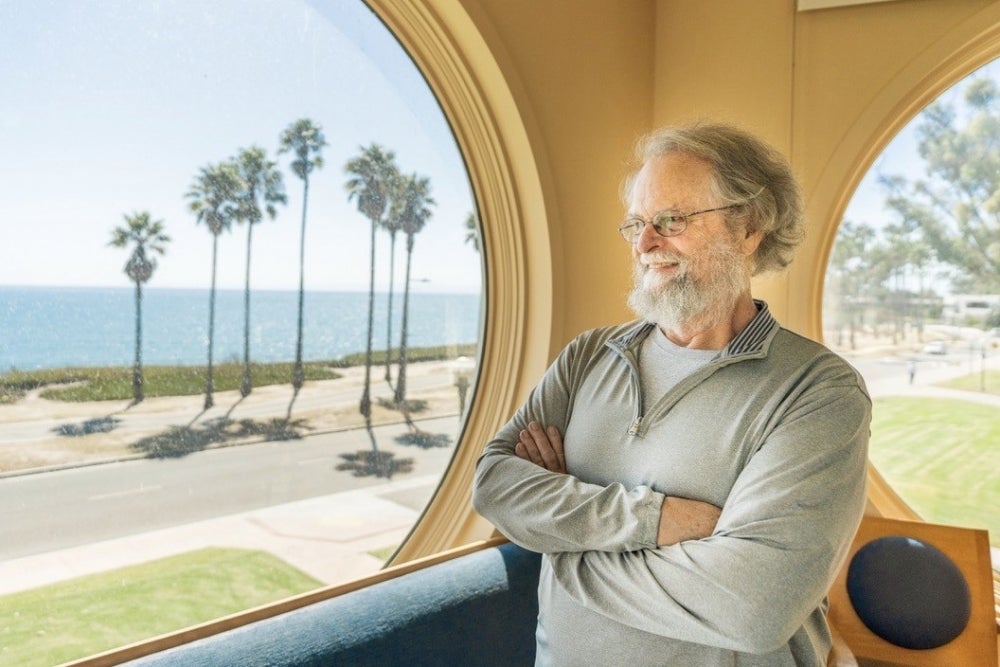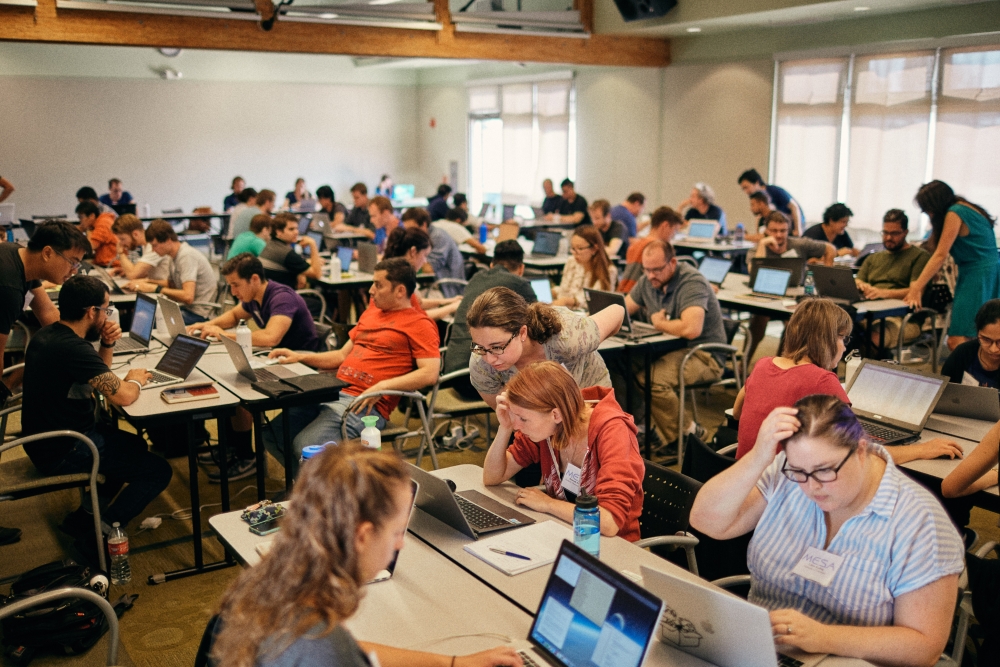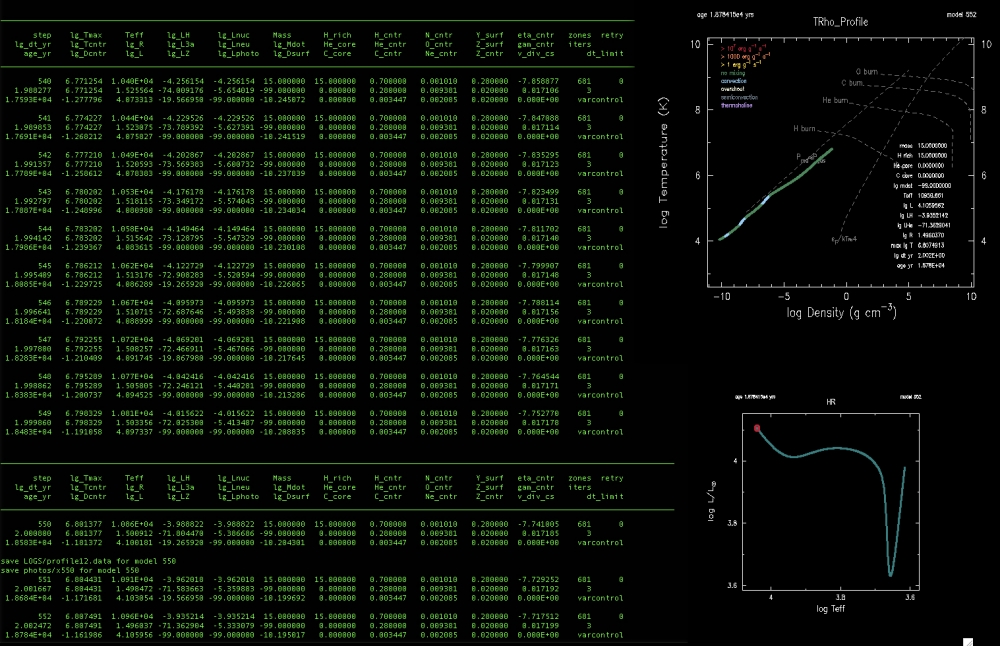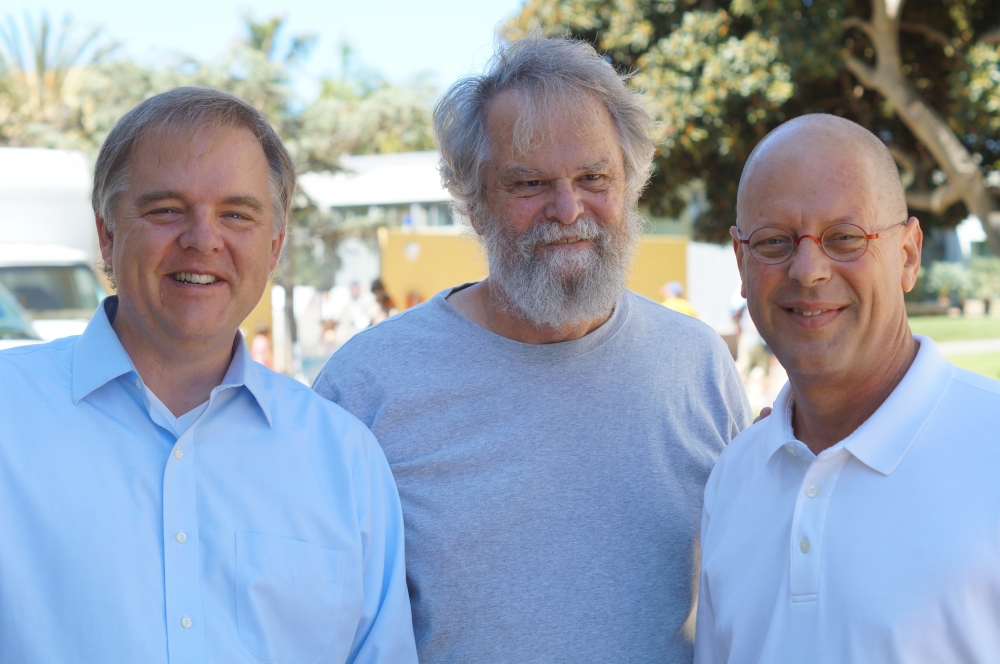
An Accidental Astrophysicist
After helping to found a company like Adobe Systems and developing software like the PDF, a typical fellow might kick back and enjoy retirement for the next 40 years. Bill Paxton is far from typical. Instead of retiring, he revolutionized the field of astrophysics.
In all honesty, the veteran software designer sort of chanced upon his role as a senior fellow at UC Santa Barbara’s Kavli Institute for Theoretical Physics. But since joining KITP, he’s expanded access to computational stellar astrophysics with his MESA software, a simple, open-source stellar modeling program that’s kept him busy for the last decade and a half.
And now, for his contribution to the field, the American Astronomical Society has awarded Paxton the 2021 Beatrice M. Tinsley Prize. The prestigious award is conferred every two years in recognition of an outstanding research contribution to astronomy or astrophysics of an exceptionally creative or innovative character. The recipient is often a researcher who has revolutionized the field in a way that empowers other scientists to make progress.
“I’m very happy to see Bill Paxton’s work celebrated with the Tinsley Prize,” said AAS President Paula Szkody. “He describes himself as a computer scientist, but through his collaborations with astronomers, he has developed software without which stellar astrophysics would not be nearly as advanced as it is today.
“His inspired work on providing, maintaining and supporting the use of open-source stellar-evolution codes [has] seeped into the foundation of research and education efforts and [has] given rise to an immense amount of new research across multiple subfields of astrophysics,” Szkody added.

Participants at the 2018 MESA Summer School learn how to incorporate the software into their own research.
Photo Credit: JAKUB OSTROWSKI
Paxton has had quite an impact on the field for someone who hadn’t even heard of the Tinsley Prize until learning that he won it. “I’m not an astrophysicist,” Paxton maintained. “I’m a computer scientist who has stumbled into this area.”
Paxton earned his doctorate in computer science from Stanford in 1977. While working at the Stanford Research Institute in 1968, he participated in what was later dubbed The Mother of All Demos, during which researcher Douglas Engelbart previewed many features that would become staples of personal computing, including e-mail, hypertext, word processing, video conferencing, the mouse and more.
After his time at Stanford, Paxton joined the Xerox Palo Alto Research Center where he worked on a variety of emerging technologies. Moving to Adobe in 1983, he focused on developing the Type 1 font algorithms for PDF until retiring to Steamboat Springs, Colorado in 1990.
After a decade in Colorado, Paxton and his wife, Kathlyn, moved to Santa Barbara, where he continued feeding his insatiable curiosity by taking courses at UC Santa Barbara. When he sat in on KITP Director Lars Bildsten’s Stellar Structure and Evolution course, otherwise known as Stars with Lars, he soon caught the astrophysicist’s attention.
“I made a nuisance of myself to the extent that Lars eventually said, ‘Why don’t you start coming to my group meetings?’” recalled Paxton, who began attending the scientist’s weekly research meetings. “And then Lars said, ‘Why don’t you think about doing a program that we can use for modeling stars?’ And I started thinking about that. And then Lars said, ‘Why don’t you get an office here at KITP?’” Eventually, Paxton found himself in Bildsten’s research group working on what would become MESA.
“I am so very pleased that Bill has received this wonderful acknowledgment from the astrophysics community recognizing more than a decade of effort he has invested in developing a computational instrument available to all,” said Bildsten.
Computational astrophysics enables scientists to bridge the gap between theory and observation. “Ideally, you want to be able to run an experiment, but you can’t go grab a star, run an experiment for a billion years, and come back later to see how it turned out,” Paxton remarked. Computer modeling fills this need.

In addition to text and values, MESA can generate plots of a star’s temperature vs density (top right) and the history of its luminosity vs its surface tempurature (bottom right) in real-time as it runs.
Photo Credit: KITP
However, in the early 2000s, only a handful of astrophysicists were modeling stellar evolution, and most of the software was proprietary. This wasn’t necessarily because researchers didn’t want to share their work, Paxton explained, but rather communication was difficult in those early days of the internet.
And many of these programs were so complex as to be useless unless the creator worked down the hall and could explain it. This limited computational stellar astrophysics to just a handful of groups at a few institutions in the world.
It was against this backdrop that Paxton began designing MESA at KITP. Right away, the developer had a few criteria: The software had to be something he could run on his home computer; it couldn’t take more than 30 minutes to run, on account of his short attention span; and it had to generate pretty graphs.
These restrictions, driven purely by his own interests and desires, laid the foundation for a program that could be used by researchers around the world without a huge investment. “You can run it on a 4 GB laptop,” Paxton remarked. MESA uses a simple set of physics equations to model stars as spherical shells. Since spheres are symmetrical, the program can essentially use a 1-dimensional model to simulate a 3-dimensional object, greatly simplifying computational demands.
Paxton designed MESA to be modular: built from semi-independent chunks that work together to achieve a more sophisticated result. For instance, the software has modules for opacity, nuclear reactions and equations of state, among other things. Each module can be used as a stand-alone tool depending on a researcher’s needs.
Another boon of the software’s simplicity and modularity is that scientists can use results from MESA as the starting point for resource-intensive 3D simulations in other models. Beefier, bespoke simulations can help physicists understand phenomena like turbulence, which don’t track well in MESA’s 1D model. With the resulting insights, scientists can, in turn, develop better 1D analogues of these 3D processes in MESA. In this way, the software has become the tool of choice for most stellar researchers.
Frank Timmes, an astrophysics professor at Arizona State University, remembers Paxton asking to use some of the resources on his website during MESA’s early days. “An email message was unusual,” recalled Timmes, who had been working on open-source astrophysics software himself. “People rarely ask, since they can just click to download.”
He figured Paxton was a new graduate student in Bildsten’s group who was simply being overly polite. “About three email exchanges later I recall thinking, ‘Ok, this is no graduate student. Who are you?’ After a little digging, my thinking became, ‘This guy is a ringer!’” Timmes went on to become one of the developers on the MESA team.

Bill Paxton is flanked by KITP Director Lars Bildsten (left) and Frank Timmes (right), who continue to support the development of MESA.
Photo Credit: SONIA FERNANDEZ
“Bill’s passion for excellent software and open availability has caused a renaissance in stellar astrophysics,” Bildsten said. MESA has garnered over 1,000 users so far, and its ease of use has led to its adoption for teaching and assignments in more than 40 astrophysics courses. Studies that use the software have cited the MESA publications some 5,000 times, evidence of its remarkable uptake by the scientific community, he added.
While Paxton claims not to be particularly interested in any specific questions in astrophysics, he revels in creating tools that others can use to answer their questions. MESA has been a rewarding project overall, he admitted, above and beyond any joys and frustrations it brings him on a weekly basis.
A dedicated team of early-career scientists has coalesced around MESA over the past 15 years, and the stubborn senior developer has learned to turn over some control of the project to other members of the group. “MESA is going to keep going just fine without me,” Paxton said. “I’m quite confident of that.” That said, he plans to continue contributing to the project for as long as he can.
The project has received generous support from the National Science Foundation, which has enabled its continued development as well as an annual MESA summer school held at UC Santa Barbara.
Paxton is concerned, however, about the future of computational astrophysics as a whole. Software developers are not superstars in the world of astrophysics in the same way that they are in the tech industry. What’s more, there’s still a huge difference in salary between a position in academia and one in tech, he noted. And as software becomes more complex, the skill level required to develop tools like MESA will only increase. The field is already competing to attract talented individuals who would have no problem landing high-paying jobs elsewhere.
“I’m concerned about the health of the field in terms of finding a way not to rely on freaks like myself wandering in off the street,” he said half-jokingly, “who don’t need to have a salary, don’t care about tenure, and are just doing this stuff for fun and willing to spend huge amounts of time supporting other users.”
The community recognizes theorists for their ideas, and observational scientists for their analyses, he added, but the folks who make the computational tools to knit the two together are only starting to garner recognition for their critical contributions.
“I think a cultural change is happening,” Paxton said, “and that’s one thing that really is positive about receiving the Tinsley Prize: It’s a step by the community towards recognizing the real value of these software developers.”
Bildsten and Paxton have taken to calling programs like MESA “software instruments,” according to the latter. “Just like you can’t do observational astrophysics without an instrument like a telescope,” he said, “you can’t do computational astrophysics without an instrument such as MESA.
“The field rewards instrument builders who are creating telescopes, and they need to reward instrument builders who are creating critical software tools,” Paxton continued. “Being selected for the Tinsley Prize is a step in that direction.”



